Kev's Cubes
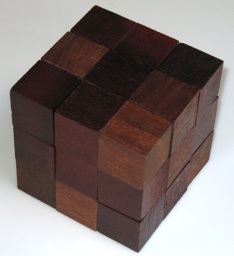
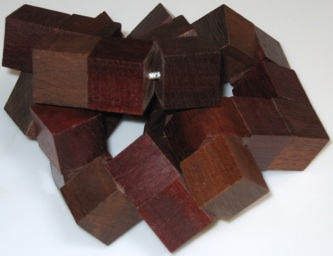
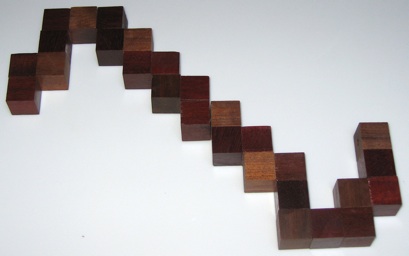
a.k.a. Snake Cubes, Serpent Cubes, Cubra Cubes
Patented by Dryer U.S. 3,222,072 in 1965 and sold by
Trench Puzzles circa 1985,
this one made by J. Storer 1988.
(bloodwood, 2.8 inches assembled)
Twenty seven cubes are threaded together with an elastic cord
(the cord either pass through opposite faces or faces at 90 degrees).
They can be folded up by rotating adjacent cubes with respect to each other to form a 3x3x3 cube
(where none of the cord shows).
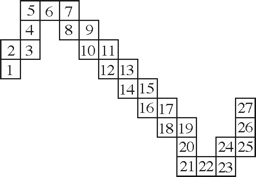
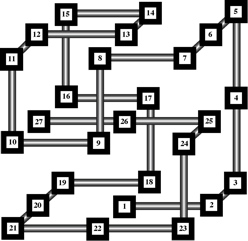
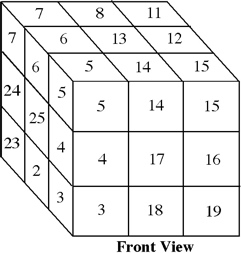
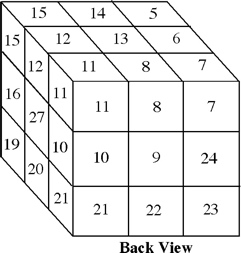
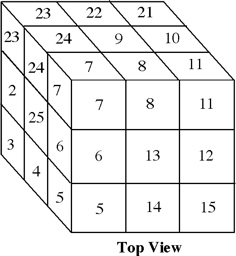
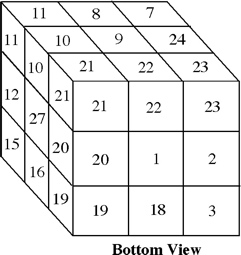
If the cube sequence was alternately colored red and black,
then the solved 3x3x3 cube has red corners and face centers.
Other puzzles are possible with different patterns or colors.
The Kev solution is unique where the ends are face centers.
Further reading:
Jaap's Page,
from: http://www.jaapsch.net/puzzles/snakecube.htm
Mark Weston's Page,
from: http://www.cs.uvic.ca/~mweston/snakes.html
Eryk Vershen's Page;
from: http://cantaforda.com/cfcl/eryk/puzzles/chain_cube.html
Dreyer Patent,
from: www.uspto.gov - patent no. 3,222,072
A Harder Version of Kev's Cubes
With the standard corded version,
a cube can rotate in place due to the cord stretch.
This 3D print version eliminates the cord and requires mechanical rotation of adjacent faces.
One often needs to pre-rotate upcoming attached portions before a fold,
thus precluding strictly sequential folding, and making it harder to visualize and quickly try out possibilities.
Referring to the figures on the preceding page,
is convenient to solve by first positioning the three triples
25/26/27, 21/22/23, 19/20/21 and then working back to Cube 1.
Cube 25 is the "Start Cube" (S),
Cube 1 is the "End Cube" (E),
"Bend Cubes" (B) turn the cord 90 degrees,
and
"Pass Cubes" (P) sends the cord straight through.
Cubes ordering can be represented as a character string
broken up into the places where a P occurs and there are three cubes in a line
(3 characters at the start and two places where 5 characters make a pair of them)
to make substrings of lengths 3, 1, 5, 11, 5, 2:

The parts, based on 7/8" cubes, are Start, Bend, Pass, End, Peg, Plug:
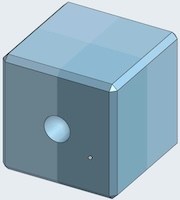
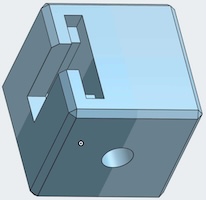
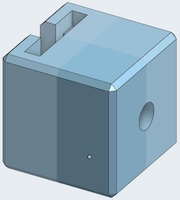
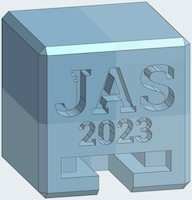
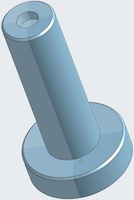
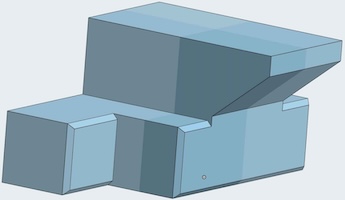
Pegs are pushed in as far as they will go (hole depth allows the head to protrude appropriately).
A cube is attached by sliding its peg head into the slot of the adjacent cube and inserting a plug.
Although glue could be used,
tolerances are sufficiently tight for puzzle play.
The tolerance of the peg heads allows a cube to spin freely
(so long it is against a flat plane of cubes).
On the left below, the decorative version uses a second color for the plugs.
On the right below,
the solid color version uses a different print for the bend cube that hides the plugs;
for the 5 pass cubes and the end cube the same color plug is used
(and for the solved puzzle the 6 exposed plugs can be hidden by appropriately rotating those cubes).
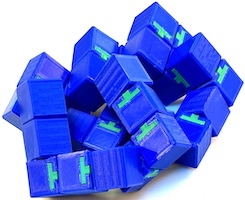
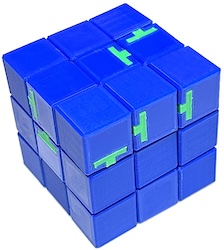
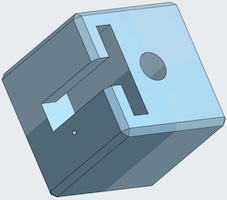
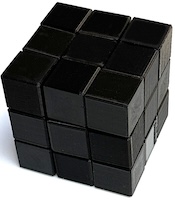
Plastic, 2+5/8" square when assembled, copyright J.A. Storer, 2023.



















